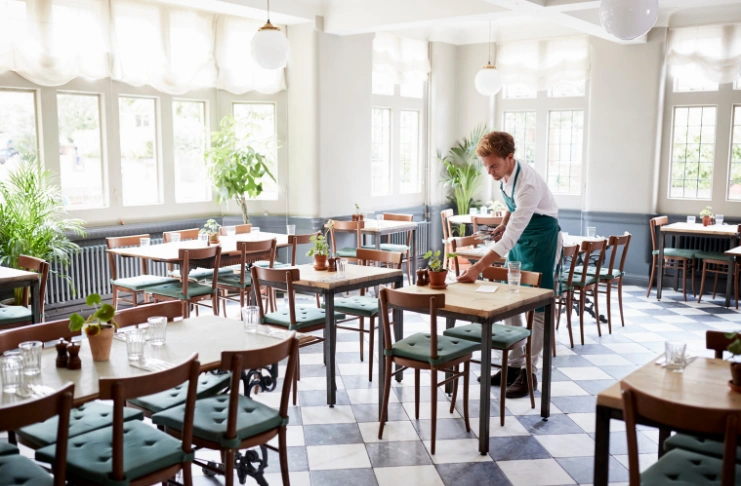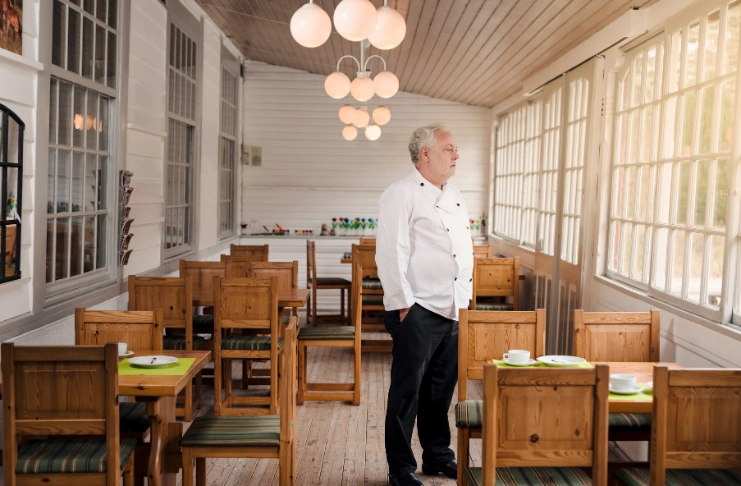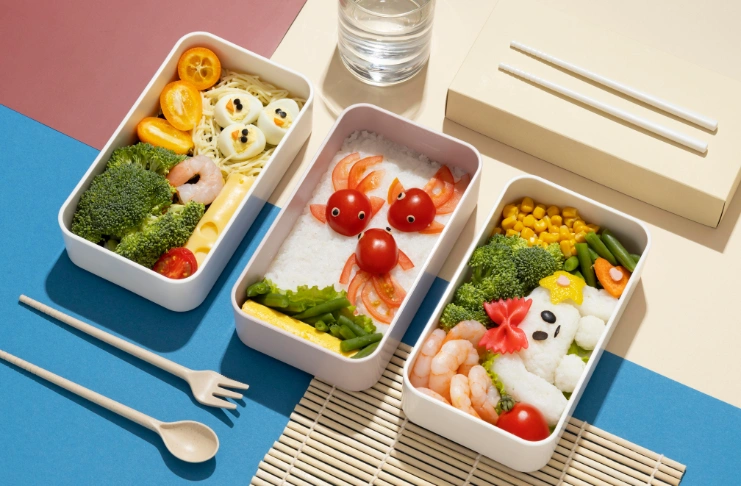Every restaurant experiences slow days – those quiet shifts when tables remain empty and staff outnumber guests. While these lulls are normal in the restaurant business, consistently empty dining rooms can seriously impact your bottom line. The good news? Strategic planning and creative thinking can transform those slow days into profitable opportunities.
Below are the top restaurant slow day strategies that’ll breathe life back into your food business.
Understanding the Challenge of Slow Days

Slow days aren’t just frustrating; they’re expensive. Empty tables mean wasted inventory, underutilized staff, and fixed costs that continue regardless of your sales volume.
Understanding what causes these slow periods is the first step toward addressing them. Is it seasonal? Weather-related? Due to local events or competitor promotions? Tracking your sales data is essential to identifying patterns and creating targeted solutions.
INDUSTRY INSIGHT
| Slow days in the restaurant industry often align with predictable seasonal patterns. For instance, December 2023 in the U.S. saw a 2.3% year-over-year increase in same-store sales, marking the strongest month since July. However, this uptick was mainly due to holiday dining, with earlier months experiencing stagnant traffic despite higher guest spending. At the same time, the holiday season can be a double-edged sword. While some restaurants thrive, many upscale establishments report declines in business as high as 60% during major holidays. This drop is often because customers prefer spending time with family, preparing meals at home, or allocating budgets to travel and gifts. In India, for instance, the summer of 2024 led to a 40% decrease in business due to extreme heat waves keeping diners indoors. By understanding these seasonal patterns and their effects on footfall versus guest spending, restaurant owners can craft targeted strategies to counteract the lean periods and keep revenue stable throughout the year. |
Top 9 Restaurant Slow Day Strategies That Serve

Here are the high-impact restaurant slow day strategies that can uplift your sales at any time of the year:
Create a Slow Day Menu
Curate a specialized menu exclusive to your slowest shifts. This could include high-margin, low-prep items designed to move volume without overburdening your kitchen.
Offering something customers can’t get on any other day encourages repeat visits. Bonus: It helps with inventory turnover and portion control.
Your slow day menu should focus on items with extended shelf life or cross-utilizability to minimize waste. Consider featuring dishes that showcase seasonal ingredients at their peak availability and price point.
Optimize Loyalty Programs for Off-Peak Hours
Instead of generic point-based systems, tailor your loyalty program to reward visits during off-peak days. For instance, double points on Wednesdays or a free appetizer on Monday nights after 7 PM.
Use your CRM to segment your loyal members based on visit frequency and spending patterns to deliver hyper-targeted slow-day promotions.
The most effective programs include tiered rewards for off-peak visits, creating “status” opportunities exclusively available during slow periods.
Partner with Local Offices or Schools

Slow afternoons? Contact local businesses or educational institutions with group lunch packages or exclusive offers. Consider pre-order options or fixed-time deliveries to ensure operational efficiency. This turns a quiet afternoon into a dependable revenue stream while targeting local customers and expanding your reach within the community.
For best results, target businesses within a 10-minute radius, as proximity dramatically increases conversion rates. Develop a dedicated corporate menu featuring items that travel well and can be easily set up by non-restaurant staff.
Professional service firms and creative agencies typically have the highest budget per head for these arrangements. Create a simplified digital ordering portal for corporate clients that allows scheduling orders up to two weeks in advance, giving your kitchen valuable production forecasting.
Launch Themed Nights or Experiences
Introduce themed nights like “Trivia Tuesdays” or “Wine & Jazz Thursdays” that create a routine and expectation. These events work particularly well on historically slower days by giving people a reason beyond food to walk through your doors. Promote through social media, email, and local event listings for visibility.
Remember, the most successful themed nights tap into community interests or cultural moments. Schedule these events during your slowest 3-hour window rather than all day to create energy concentration.
Collect attendee data at every event for remarketing opportunities.
Leverage Weather-Based Promotions

Weather affects diner behavior. Use hyperlocal weather triggers via platforms like Wisely or Thanx to send targeted promotions. For example: “Too hot to cook? Get 15% off AC-cooled dine-in today.” This capitalizes on impulse behavior and turns a weather lull into an opportunity.
The most effective weather-based promotions address a specific pain point. For example: “Beat the heatwave with our frozen margaritas.” Weather-triggered SMS campaigns show 3-4× higher conversion rates than standard promotional messages when sent within one hour of weather changes.
Consider creating a weather-based promotion calendar in advance, with different strategies for rain, extreme temperatures, or unexpected sunshine.
Offer Limited-Time Collabs or Pop-ups
Slow days are ideal for testing new concepts. Invite a local chef, bartender, or brand to host a pop-up. This will inject novelty into your offering, boost business, create cross-promotion opportunities, and attract new audiences, especially if the collaboration is exclusive to that day.
Partner with complementary brands like craft breweries, local bakeries, or specialty food producers. Structure the financial arrangement as a percentage of incremental sales rather than a flat fee to ensure mutual interest in driving traffic.
Document these collaborations with professional-quality photos and videos to create content for future marketing.
Run Micro Influencer Takeovers During Off-Peak Hours

Rather than shelling out for macro influencers, build a long-term collaboration plan with micro influencers (1K–10K followers) who live within 5 km of your location.
Invite them for off-peak meals, film short reels, and allow them to “take over” your Instagram Stories midweek. A well-executed collaboration can produce 2–3 high-converting assets for your feed, helping your slow-day content feel dynamic and timely.
Fine-Tune Your Google Business Profile
Many diners search last minute, especially on weekdays. Keep your Google Business listing updated with day-specific offers, images, and hours. Use the Q&A and Posts feature to highlight slow-day specials, which can boost the restaurant’s visibility and local SEO during off-peak browsing hours.
Google Business Profiles with regularly updated posts are 2.7 times more likely to be trusted by consumers. Respond to every review within 24 hours to boost your listing’s algorithm ranking.
Introduce Flash Deals Via SMS or WhatsApp

When real-time traffic is slow, activate flash deals through SMS or WhatsApp. For example, ” Dine in before 6 PM today and get dessert free.” These immediate nudges work best with opt-in customer lists and minimal lead time.
Segment your SMS list by zip code to target customers within a 15-minute travel radius for last-minute promotions. Time these messages strategically: Lunch flash deals perform best when sent between 10:30 and 11:15 AM, while dinner promotions see the highest conversion between 3:00 and 4:30 PM.
Limit these messages to a maximum of 1-2 per week to prevent subscriber fatigue.
Staff Smarter, Not Harder
Use your POS and reservation data to staff appropriately on slow days. Consider cross-training your team to handle multiple roles efficiently, and schedule more experienced staff who can upsell or handle lean shifts without sacrificing service quality. Right-sizing your team preserves labor margins without risking customer experience.
Track sales-per-labor-hour metrics for each day segment to identify optimization opportunities.
Consider implementing a “flex schedule” system where staff can self-select reduced hours during predictable slow periods. This would create a win-win situation that reduces labor costs while honoring employee preferences.
Conclusion
While slow days present challenges for any restaurant, they also allow for creativity, relationship building, and business growth.
However, remember that consistency is key. The above-mentioned slow day strategies aren’t one-time fixes but ongoing programs that customers come to anticipate and enjoy. With persistent effort, those formerly empty tables can become reliable sources of revenue and customer loyalty.
Frequently Asked Questions
1. What is the slowest day for a restaurant?
Monday is typically the slowest day for most restaurants, followed closely by Tuesday. Weekend diners often tighten their budgets early in the week.
2. Which strategy is best for restaurant?
The most effective strategy varies by restaurant type and location, but loyalty programs consistently show strong returns across the industry. For immediate impact, limited-time promotions on specific slow days often produce quick results.
3. What’s the slowest month for restaurants?
January and February are generally the slowest months for restaurants in most regions. Post-holiday budget constraints and winter weather contribute to this seasonal slump.
4. How do you turn around a struggling restaurant?
Turning around a struggling restaurant requires a multi-faceted approach: analyze your data to identify specific problem areas, refresh your menu focusing on high-margin items, invest in targeted marketing, train staff for exceptional service, and create loyalty programs to encourage repeat business.
5. What are the slowest days for restaurants?
Monday and Tuesday are consistently the slowest days for most restaurants, but business gradually increases on Wednesday as the week progresses.
6. How to boost sales in a restaurant?
You can boost restaurant sales by implementing strategic promotions during slow periods, creating a robust loyalty program, optimizing your menu for profitability, focusing on exceptional service to encourage repeat visits, and leveraging online ordering and delivery platforms to build customer loyalty.
7. What is the slowest week of the year for restaurants?
The first week of January is typically the slowest week for restaurants nationwide, as customers recover from holiday spending and focus on New Year’s resolutions.
8. Why are Mondays slow for restaurants?
Mondays are slow primarily because customers often dine out during weekends and then economize early in the week. Plus, many people grocery shop on weekends and cook at home early in the week.
9. How can I increase sales on slow days?
You can increase sales on slow days by offering day-specific promotions, hosting special events, creating a dedicated social media strategy for slow days, implementing happy hour specials during off-peak hours, and developing a loyalty program that incentivizes visits during traditionally slow periods to ensure happy customers.
10. What are good ways to attract customers?
Effective methods to attract customers include maintaining an active social media presence, offering targeted promotions, hosting special events, creating a customer loyalty program, ensuring consistent food quality, providing exceptional service, and collecting and responding to customer feedback.
11. What are the 4 ways to increase sales?
Four effective ways to increase restaurant sales are:
– Implement a data-driven loyalty program
– Optimize your menu for profitability and create limited-time offers
– Develop targeted marketing for specific slow periods, and
– Train staff in suggestive selling techniques.
12. How to attract foot traffic?
You can attract foot traffic by creating eye-catching window displays and sidewalk signage, hosting sidewalk sampling events, partnering with nearby businesses, offering time-limited promotions visible to passersby, and maintaining an inviting restaurant exterior.
13. Why is the restaurant industry so slow right now?
The restaurant industry faces challenges including rising food costs, labor shortages, changing consumer habits with increased preference for takeout and delivery, and economic pressures affecting discretionary spending on dining out.





